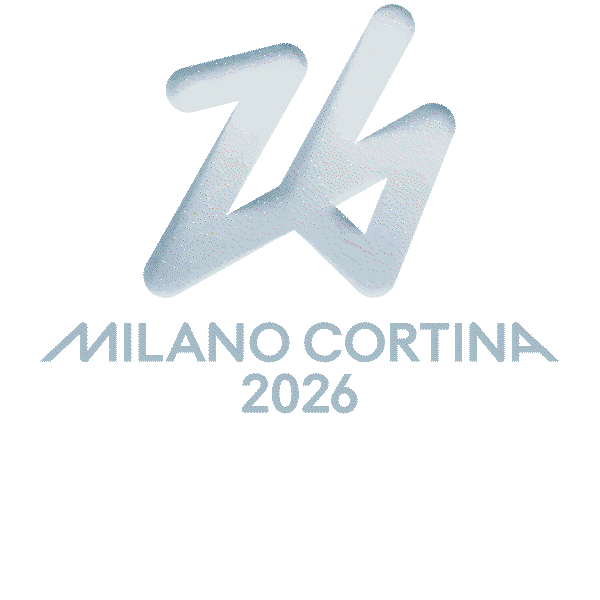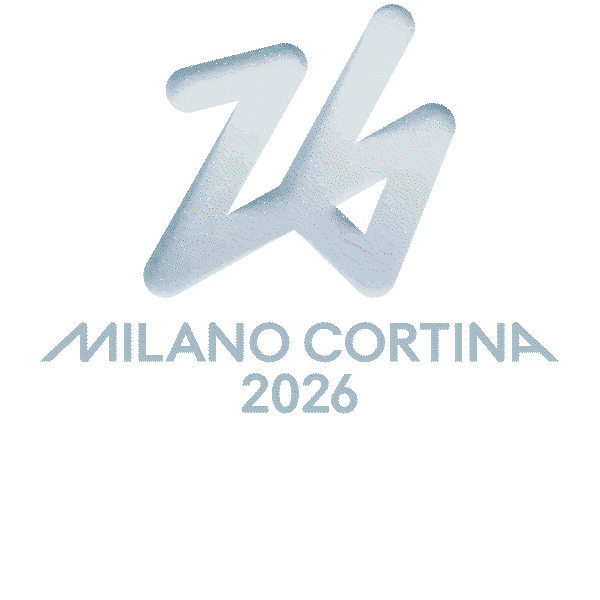
Alpine Skiing
Alpine skiing is a beloved winter sport followed by many. It has been part of the Olympic Games since 1936. As we look forward to Milano Cortina 2026, here is everything you need to know about this sport.
Competitions
The Alpine skiing competitions at Milano Cortina 2026 will consist of 10 events:
- Downhill (men and women)
- Super-G (men and women)
- Slalom (men and women)
- Giant Slalom (men and women)
- Combined (men and women)
In 2026, the women's races will be held in Cortina d'Ampezzo, on the Tofane Alpine Skiing Centre piste, and the men's races in Bormio, on the Stelvio Ski Centre piste.
Olympic History
Modern Alpine skiing was created in the late 19th century when the Norwegian legend Sondre Norheim made skis popular. The sport made its Olympic debut at the 1936 Garmisch-Partenkirchen Games with the combined (downhill + slalom) event for both men and women. In 1948, downhill and slalom races were added as separate events. The giant slalom was introduced at the 1952 Helsinki Games and the super-G in 1988.
Basic Rules
At Milano Cortina 2026, the alpine skiing events will include fast disciplines like downhill and super-G, technical disciplines like slalom and giant slalom, and mixed events such as the Alpine combined (a mix of speed and technique).
Speed disciplines
The downhill, such as the super-G, has long courses that take more than a minute and a half to complete, with large distances between the gates. This leads to the fastest speeds in alpine skiing. Athletes can practice and test the track and ideal paths in timed training sessions before the race.
The super-G, also known as the super giant slalom, is the second fastest discipline in alpine skiing and one of the most recent. It was introduced by the International Ski Federation (FIS) in 1982. The race follows a course lined with pairs of gates. Skiers are disqualified if they miss even a single gate during the descent. Compared to the other two slalom disciplines, the super-giant slalom has much wider turns and is therefore skied at higher speeds. In fact, it is raced on the same slopes used for the downhill event.
The downhill and super-G races are held in one round. In both races, the winner is determined by the fastest time.
Disciplinary techniques
The special slalom (or just slalom) is the shortest alpine ski race, with a time of 50"-60" and the most number of turns. Skiers have to ski down a course, weaving through a series of gates set up in quick succession until they reach the finish line. In slalom, skiers have to touch the gates as they pass through them, so they wear special protection on their hands, legs, and face. The slalom race consists of two runs on the same slope but on different courses. The winner is determined by the skier with the shortest combined time from both runs. The starting order in the second run is the opposite of the qualifying run for the first 30 (the first to start is therefore the 30th in rank), while the 31st and up follow the ranking of the first run. The one with the lowest total time of the two runs is the winner.
The giant slalom is a race with an average distance of 20-30 metres between the curves, and takes about one to one and a half minutes to complete. The track has wider curves compared to the special slalom, and the gates are used to mark the course instead of poles. It doesn't require as many safety protections because the gates are hit less often. The race is split into two runs on the same slope but on different tracks, with all competitors that finish the first run participating in the second. The starting order in the second run is the opposite of the qualifying run for the first 30 (the first to start is therefore the 30th in rank), while the 31st and up follow the ranking of the first run. The one with the lowest total time of the two runs is the winner.
Combined event
The Alpine combined event (two athletes, one downhill and one slalom) consists of a fast race (one run) and a technical one (a slalom run). The final ranking is determined by adding the times from both races.
Curiosities about Italian Championships
Zeno Colò was the first Italian to win an Olympic gold medal in Alpine skiing in 1952 in Oslo. He was nicknamed the "Oslo Hawk" for this exploit and left an indelible mark on Italian sports history.
Alberto Tomba is the Italian with the most medals in Alpine skiing at the Olympic Games (five in total, three golds and two silvers). He was unforgettable at the Calgary 1988 Olympics, where he made history by winning two gold medals, becoming the first Italian Alpine skier to achieve this at the same Winter Olympics. To broadcast the second run of the special slalom live, Rai stopped the final of the Sanremo Festival. The whole of Italy watched as the "Azzurro" triumphed, and the myth of "Alberto Tomba - la bomba" was born. At the Albertville 1992 Olympics, he won the giant slalom - the first in the world to win the same event at two consecutive Olympics, and came second in the slalom with an incredible comeback from sixth place in the first run, behind one of his historic rivals, the Norwegian Finn Christian Jagge. At the Lillehammer 1994 Winter Olympics, Tomba won his last Olympic medal, coming second in the slalom.
Deborah Compagnoni is the only Italian athlete to have won a gold medal in three different editions of the Winter Olympics in Alpine skiing. She won the supergiant in Albertville in 1992, the giant slalom in Lillehammer in 1994 and the giant slalom in Nagano in 1998. He has a total of four medals won at the Games, including a silver in the special slalom in Nagano in 1998.
Sofia Goggia is the only female Alpine skier to have won a gold medal in the downhill at the Olympic Games. At Pyeongchang 2018, 66 years after Zeno Colò, the athlete from Bergamo made history by winning the gold in the downhill event.
FAQ
Here are the answers to your questions.
-
Which male athlete has won the most medals for skiing at the Olympic Games?
-
Which female athlete has won the most medals for skiing at the Olympic Games?
-
Which nations medal the most at the Olympic Games?
-
Who are the Italian Olympic champions in Alpine skiing?
-
Where will the Milano Cortina 2026 Alpine skiing competitions be held?
Discover the Other Sports
History, curiosities and the rules of all the other Olympic disciplines planned for Milano Cortina 2026























































































